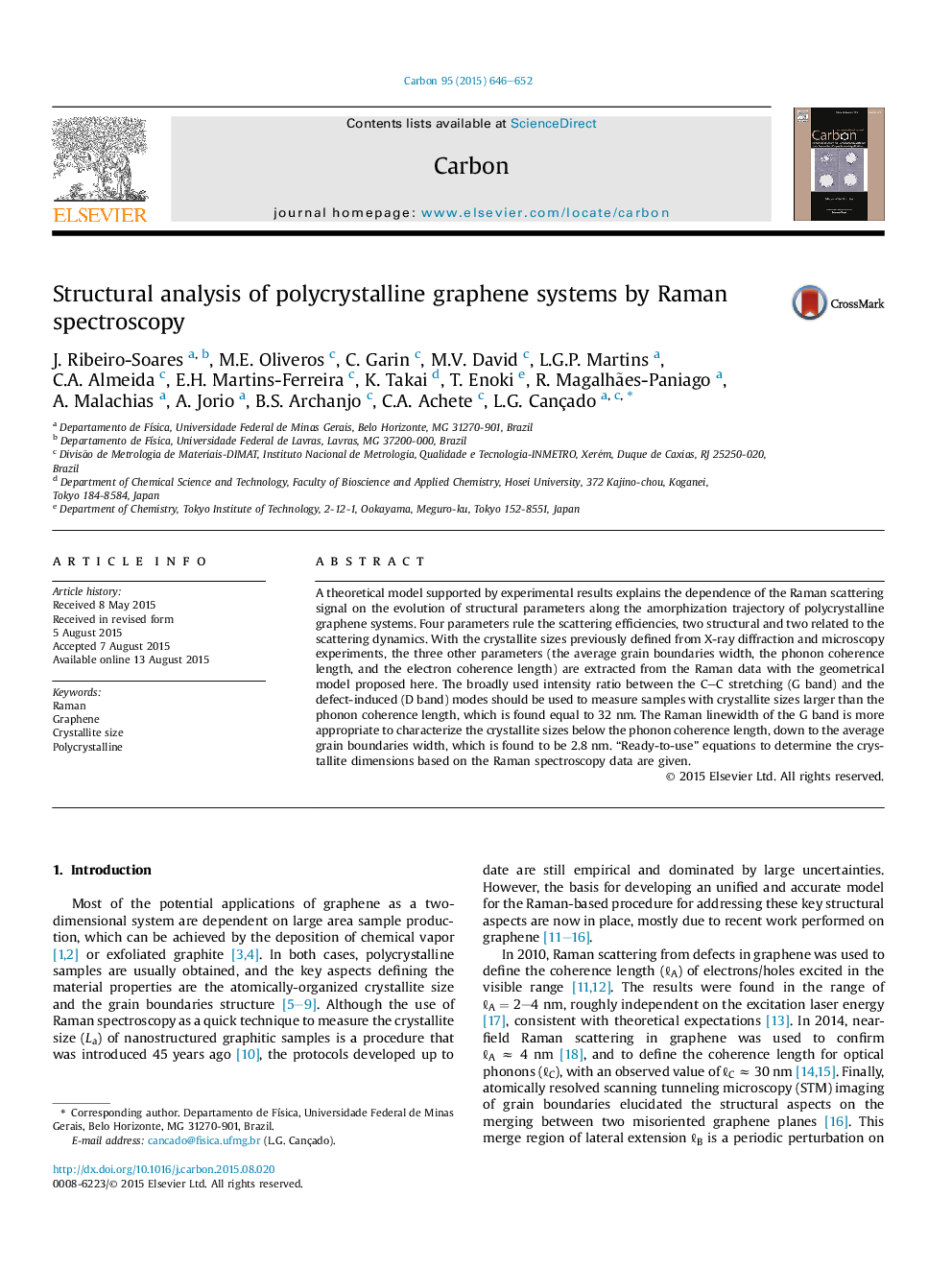| Article ID | Journal | Published Year | Pages | File Type |
|---|---|---|---|---|
| 7851373 | Carbon | 2015 | 7 Pages |
Abstract
A theoretical model supported by experimental results explains the dependence of the Raman scattering signal on the evolution of structural parameters along the amorphization trajectory of polycrystalline graphene systems. Four parameters rule the scattering efficiencies, two structural and two related to the scattering dynamics. With the crystallite sizes previously defined from X-ray diffraction and microscopy experiments, the three other parameters (the average grain boundaries width, the phonon coherence length, and the electron coherence length) are extracted from the Raman data with the geometrical model proposed here. The broadly used intensity ratio between the C-C stretching (G band) and the defect-induced (D band) modes should be used to measure samples with crystallite sizes larger than the phonon coherence length, which is found equal to 32Â nm. The Raman linewidth of the G band is more appropriate to characterize the crystallite sizes below the phonon coherence length, down to the average grain boundaries width, which is found to be 2.8Â nm. “Ready-to-use” equations to determine the crystallite dimensions based on the Raman spectroscopy data are given.
Related Topics
Physical Sciences and Engineering
Energy
Energy (General)
Authors
J. Ribeiro-Soares, M.E. Oliveros, C. Garin, M.V. David, L.G.P. Martins, C.A. Almeida, E.H. Martins-Ferreira, K. Takai, T. Enoki, R. Magalhães-Paniago, A. Malachias, A. Jorio, B.S. Archanjo, C.A. Achete, L.G. Cançado,
